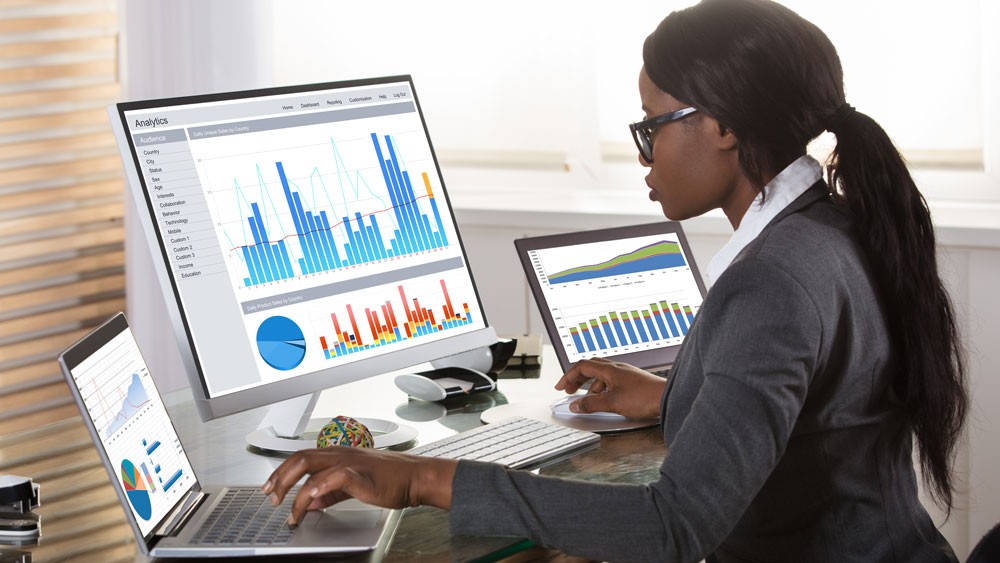Skill Set And Software For Data Analysts
Who Is A Data Analyst?
A data analyst is a professional who is responsible for collecting, analyzing, and interpreting complex data to support decision-making and strategic planning within an organization. Data analysts use statistical techniques, programming languages, and data visualization tools to uncover insights and trends within large data sets.

They may work in a variety of industries, including finance, healthcare, marketing, and technology. Their role typically includes identifying areas for improvement, making recommendations for changes, and communicating findings to stakeholders within the organization.
Skill Set For Data Analyst
A data analyst typically needs to have the following skills:
Strong analytical skills: the ability to analyze large sets of data and draw insights from them.
Technical skills: proficiency in programming languages such as Python, R, SQL, and Excel.
Strong attention to detail: the ability to spot patterns and trends in data.
Strong communication skills: the ability to present data clearly and concisely to both technical and non-technical audiences.
Knowledge of data visualization tools: the ability to create charts, graphs, and other visualizations to help communicate data insights.
Knowledge of statistics and statistical modeling: the ability to use statistical techniques to analyze data.
Familiarity with big data technologies: knowledge of big data platforms such as Hadoop and Spark can be beneficial for data analysts working with large datasets.
Machine learning: experience with machine learning models and libraries such as sci-kit-learn, TensorFlow, and Keras is becoming increasingly important for data analysts.
Business acumen: the ability to understand and interpret data in the context of a business problem.
Continual learning: data analysis is a field that is constantly evolving, so it is important for data analysts to stay up-to-date on new tools and techniques.
Software For Data Analysts
Microsoft Excel: Excel is spreadsheet software that is commonly used for data organization, cleaning, and basic analysis. It has built-in functions for things like sorting, filtering, and calculating statistics, as well as support for charts and graphs. Take a course on basics of Microsoft Excel here or go for a Diploma here
R: R is a programming language and environment for statistical computing and graphics. It is widely used by statisticians and data scientists for data analysis and visualization. It has a large number of packages (libraries) that can be used for various data analysis tasks. Check out an introductory course or go for Diploma here.
Python: Python is a general-purpose programming language that is widely used in data science. It has a large number of libraries such as pandas, NumPy, and sci-kit-learn that are commonly used for data manipulation, analysis, and visualization. If you are new to Python, check this course and if you want to delve more into it, check this course.
SQL: SQL (Structured Query Language) is a programming language used for managing and manipulating relational databases. Data analysts often use SQL to extract and query data from databases. Check out this Diploma.
Tableau: Tableau is a data visualization tool that allows users to create interactive charts, maps, and dashboards. It is commonly used by data analysts to communicate insights and findings in a visual and interactive way. Check out this certificate course
Git: Git is a version control system that allows multiple users to collaborate on the same codebase. It is commonly used by data analysts to track changes to their code and collaborate with others on projects. Take this certificate course in Git fundamentals.
Jupyter Notebook: Jupyter Notebook is an open-source web application that allows data analysts to create and share documents that contain live code, equations, visualizations, and narrative text.
Apache Spark: Apache Spark is a fast, general-purpose cluster-computing framework for big data processing. It is commonly used by data analysts to process large data sets and perform complex data analysis. Check this masterclass.
SAS: SAS (Statistical Analysis System) is a software suite that provides a wide range of tools for data management, analytics, and visualization. It is commonly used by organizations in a variety of industries for data analysis and decision-making. Please see this masterclass, it will help.
SPSS: SPSS (Statistical Package for the Social Sciences) is a software package used for statistical analysis in social science, and is also used in education, marketing, and survey research, among other fields. This course will help your understanding of statistical data, make sure you check it.
RapidMiner: RapidMiner is a data science platform that provides an integrated environment for data preparation, machine learning, deep learning, text mining, and predictive analytics. It allows data analysts to quickly build and deploy predictive models.
KNIME: KNIME (Konstanz Information Miner) is an open-source data analytics, reporting, and integration platform. It provides a visual, interactive environment for data preparation, analysis, and modeling, and allows data analysts to build workflows and automate repetitive tasks.
Alteryx: Alteryx is a self-service data analytics platform that allows data analysts to blend, analyze, and share data without the need for coding or scripting. It is commonly used for data preparation, blending, and visualization. You can take this course for more understanding.
Power BI: Power BI is a business intelligence tool developed by Microsoft that allows data analysts to connect to various data sources, create interactive reports and dashboards, and share them with others. Check the fundamental course or go for more detailed one here
Looker: Looker is a business intelligence platform that allows data analysts to explore, analyze, and visualize data in a user-friendly way. It provides a SQL-based interface for data exploration and supports a wide range of data sources.
Interestingly, you can learn these skills and software online. Some are free while some are at ridiculously cheap prices. So, if you are passionate about becoming a data analyst, simply click on the links in each of the skill sets and software to learn more. They all free to access. You can also read know more about Data Analyst here. Don’t be in your own way, start now!




Data Analysis my passion. Thanks for sharing
Wow, this is so loaded info, I got so much value, I am sure anyone interested in Data Science will find this blog very educative
Thank you Sir. Please keep sharing the platform with as many as possible.